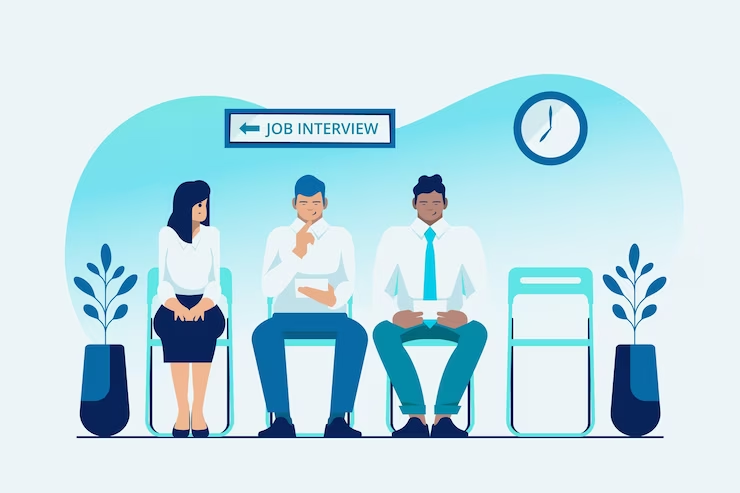
Mastering Group Discussions in Interviews: Your Path to Success
Welcome to the exciting world of group discussions! Group discussions, commonly known as GD rounds, are a dynamic part of the interview process, designed to assess candidates' communication skills, problem-solving abilities, teamwork, leadership qualities, and critical thinking. In this comprehensive blog post, we will uncover five indispensable strategies that will empower you to handle group discussions with confidence, leaving a lasting impression on interviewers.
1. Active Participation: Embrace Your Voice and Make an Impact
Group discussions thrive on active participation, making it essential to showcase your unique perspective. Shed any inhibitions and remember that silence is not the path to success. Seize the opportunity to express your opinions, even if they differ from others. Remember, a well-articulated viewpoint demonstrates your engagement and willingness to contribute to the discussion's success.
When participating in a group discussion, start by introducing yourself and acknowledging the topic at hand. Grab the attention of your audience with a compelling opening statement or a thought-provoking question related to the topic. This will help establish your presence and set the stage for your contributions throughout the discussion.
Throughout the discussion, actively engage with other participants by listening attentively and responding thoughtfully. Build on others' ideas by providing relevant examples, offering different perspectives, or asking insightful questions. Remember to maintain a balance between expressing your own thoughts and respecting the contributions of others.
2. Active Listening: The Art of Empathy and Understanding
Active listening is the bedrock of effective communication. Engage in attentive listening during group discussions, demonstrating empathy and genuine interest in others' viewpoints. Valuing their opinions fosters a cooperative environment, where ideas can be exchanged, and fruitful discussions can unfold. Actively listening equips you with the knowledge and insight needed to respond with logic and contribute meaningfully to the discussion.
To actively listen, focus not only on the words spoken but also on non-verbal cues and body language. Maintain eye contact with the speaker to demonstrate your attentiveness and show that you value their input. Take mental notes or jot down key points raised by others to help you remember and refer to them during the discussion. When responding to a point made by another participant, acknowledge their perspective and build upon it, highlighting areas of agreement or presenting a counter-argument with respect.
3. Effective Communication Skills: The Power of Clear and Impactful Expression
Communication skills extend far beyond mere fluency in English. While proficiency in English is beneficial in many job roles, effective communication transcends language barriers. Focus on delivering your thoughts and ideas in a clear, concise, and impactful manner. Avoid convoluted jargon or technical terms that may confuse your audience. Instead, opt for a simple yet powerful language, ensuring your statements resonate with clarity and coherence, leaving a lasting impression.
When expressing your thoughts, structure your statements logically, beginning with an introduction or context, followed by your main points, and concluding with a concise summary. Use examples or anecdotes to support your arguments and make them relatable to the topic or the experiences of others. Pay attention to your tone of voice, ensuring it is confident and assertive, yet respectful and considerate.
Effective communication also involves active engagement with your audience. Be aware of your body language and make use of appropriate gestures to enhance your message. Maintain good posture, make eye contact with others, and project a confident and approachable demeanor. These non-verbal cues will further strengthen your communication and demonstrate your confidence and professionalism.
4. Positive Body Language: Let Your Non-Verbal Cues Speak Volumes
Non-verbal cues can speak louder than words. Maintain positive and confident body language throughout the group discussion. An open posture, appropriate gestures, and genuine facial expressions will enhance your presence and establish a connection with the audience. A warm and engaging smile, combined with nodding or using appropriate gestures to show agreement or disagreement, will underscore your active involvement in the discussion.
Pay attention to your body language to convey a sense of confidence and receptiveness. Avoid crossing your arms or displaying defensive postures, as these can create barriers between you and other participants. Instead, lean slightly forward to show interest and engagement. Make sure to maintain a balanced level of eye contact with all participants, giving each person an equal sense of importance and respect.
5. Staying Calm and Respectful: The Art of Graceful Composure
Maintaining composure and respect even in challenging situations is a true mark of professionalism. Group discussions may sometimes include personal attacks or unwarranted criticism. However, remember that engaging in such behavior detracts from your own success. Stay calm, composed, and focused on the objective of the discussion. Acknowledge differing viewpoints gracefully, and refrain from personal attacks. By doing so, you will exemplify your ability to handle adversity with grace and professionalism.
When faced with conflicting opinions or disagreements, avoid becoming defensive or argumentative. Instead, strive to understand the perspectives of others, even if you do not fully agree with them. Respond in a calm and respectful manner, presenting your counter-arguments or alternative viewpoints without belittling or discrediting others. This approach showcases your ability to maintain professionalism and foster constructive dialogue.
Bonus Tip: Leave a Memorable Impression with a Thoughtful Conclusion
As the group discussion draws to a close, grasp the opportunity to leave a lasting impression. When invited to conclude the discussion, seize this chance to summarize the key points discussed, offer a balanced overview, and present a thoughtful conclusion. By showcasing your ability to synthesize information and articulate a concise and impactful conclusion, you will elevate your performance above the rest.
In your conclusion, avoid introducing new ideas but instead focus on summarizing the main points discussed during the group discussion. Highlight the areas of agreement and consensus reached, as well as any significant insights or solutions proposed. If appropriate, you can also suggest potential next steps or actions that can be taken based on the discussion's outcomes. This thoughtful conclusion demonstrates your ability to critically analyze information and draw meaningful conclusions.
Conclusion:
Mastering group discussions in interviews requires active participation, active listening, effective communication skills, positive body language, and a calm and respectful demeanor. These indispensable strategies will empower you to shine in group discussions, demonstrating your collaboration, communication, and critical thinking skills. Embrace the journey ahead with confidence and remember that every group discussion is an opportunity to showcase your unique abilities and potential.
By embracing these strategies, you will navigate group discussions with confidence and leave a lasting impression on interviewers. Remember to practice these techniques in mock group discussion scenarios, seek feedback from peers or mentors, and continuously refine your skills. With preparation, practice, and the right mindset, you will excel in group discussions and pave your path to success in interviews and future endeavors.





